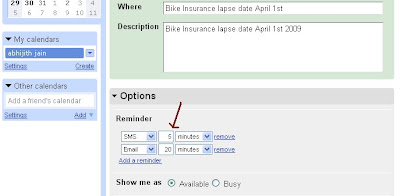Google has come far away from the day it has started. Google is celebrating its 10th year since it started in 1998.
Here is journey of Google in last 10 years.
In Pic: Google's homepage in 1998
Also see Blog on The Next Internet..
Thursday, September 25, 2008
A Decade Journey by Google
Wednesday, September 17, 2008
Marc Faber’s Comment On USA Economy!!
Dr. Marc Faber concluded his monthly bulletin with the following:
The federal government is sending each of us a $600 rebate.
If we spend that money at Wal-Mart, the money goes to China.
If we spend it on gasoline it goes to the Arabs. If we buy a computer it will go to India.
If we purchase fruit and vegetables it will go to Mexico, Honduras and Guatemala.
If we purchase a good car it will go to Germany.
If we purchase useless crap it will go to Taiwan and none of it will help the American economy. The only way to keep that money here at home is to spend it on prostitutes and beer, since these are the only products still produced in US. I’ve been doing my part.’
Link to Original Post : http://wiredbeats.com/2008/07/marc-fabers-comment-on-usa/
Wednesday, September 10, 2008
MTV Roadies 6.0 Audition in Bangalore
MTV Roadies 6.0 Audition will happen in Bangalore on 21st September 2008, Sunday.
Date : 21st September 2008, Sunday.
Address :
Jnana Jyoti Convention Hall, Central College Building,
KR Circle, Bangalore - 560001.
You can find the location here.
Also you can search the path in http://wikimapia.org and in search tab type "Jnana Jyothi Auditorium, Central College" you will get the exact location.
All The Very Best :)
Thursday, September 4, 2008
Google Launches Chrome, Enters Browser War
Google has launched new browser called Chrome. It can be downloaded in this link http://www.google.com/chrome
I have downloaded and using it from a day. Its very simple and fast. :) Still I have not found flaws or bugs in it.
Google Chrome is a free and open source web browser developed by Google. Primary goals in new browser were improvements in security, speed and stability compared to existing browsers.
Security features in Chrome:
Chrome periodically downloads updates of two blacklists (one for phishing and one for malware) and warns users when they attempt to visit a harmful site. This service is also made available for use by others via a free public API called "Google Safe Browsing API". In the process of maintaining these blacklists, Google also notifies the owners of listed sites who may not be aware of the presence of the harmful software.
Each tab in Chrome is sandboxed into its own process to "prevent malware from installing itself" or "using what happens in one tab to affect what happens in another". Following the principle of least privilege, each process is stripped of its rights and can compute but can not write files or read from sensitive areas (e.g. documents, desktop)—this is similar to "Protected Mode" that is used by Internet Explorer 7 on Windows Vista. The Sandbox Team is said to have "taken this existing process boundary and made it into a jail";[11] for example malicious software running in one tab is unable to sniff credit card numbers, interact with the mouse or tell "Windows to run an executable on start-up" and will be terminated when the tab is closed. This enforces a simple computer security model whereby there are two levels of multilevel security (user and sandbox) and the sandbox can only respond to communication requests initiated by the user.
Stability:
A separate process is allocated to each task (tabs, plugins, etc.), as is the case with modern operating systems. This prevents tasks from interfering with each other, which is good for both security and stability; an attacker successfully gaining access to one application does not gain access to all, and failure in one application results in a Sad Tab screen of death.
User interface:
The main user interface includes back, forward, refresh, bookmark, go and cancel options. Tabs are the primary component of Chrome's user interface and as such have been moved to the top of the window rather than below the controls (similar to Opera).
By default, there is no status bar displayed unlike other browsers which display one at the bottom of the screen. However, when the mouse cursor is moved over a link, the address of the link is displayed at the bottom left of the screen.
When the window is not maximized, the tab bar appears directly under the standard Windows title bar. When maximized, the title bar disappears and instead the tab bar is shown at the very top of the screen. Unlike other browsers such as Internet Explorer or Firefox which also have a full-screen mode that hides the operating system's interface completely, Chrome can only be maximized like a standard Windows applications. Therefore, the Windows task bar, system tray and start menu link still take space at all times unless they have been configured to always hide.
Learn more about http://www.google.com/googlebooks/chrome/
http://gmailblog.blogspot.com/2008/09/try-gmail-in-google-chrome.html
http://googleblog.blogspot.com/2008/09/google-chrome-now-live.html
Monday, September 1, 2008
Flexible Gmail calender reminder..

Also I have set iGoogle to my google home page. This reminds me all upcoming events in my Gmail calender.
More recent features of Gmail calender

